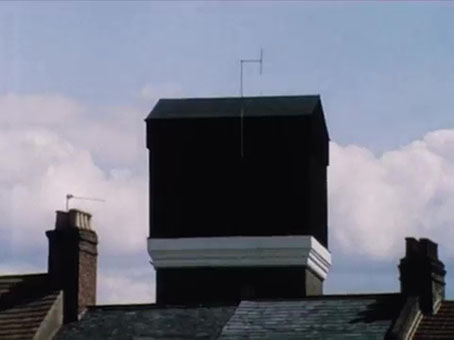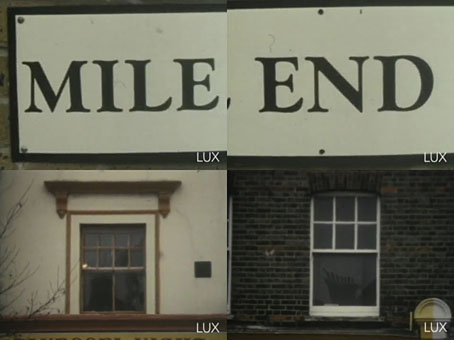The Black Tower.
I ought to have devoted this post to The Black Tower (1987), John Smith’s short and sinister film which I linked to at the weekend. It was good to watch it again after seeing a TV screening (no doubt the only one) on the UK’s Channel 4 in 1988. It also reminded me of the two shorter films linked here, both of which were also shown on Channel 4 a few years later in Benjamin Woolley’s excellent Midnight Underground series. All three films are linked by their London locations and their different solutions to the perennial problem of the micro-budget filmmaker looking to make the most of limited resources.
Sundial.
Smith’s film is the more substantial work, and of particular interest to those looking for examples of weird (or horror) cinema that avoids Hollywood cliches. The Black Tower combines static views of an unusual building with voiceover and sound effects to turn a mundane piece of architecture into a growing menace. Using a voiceover to craft a narrative from unrelated shots has always been a useful and flexible technique, especially if money is limited; Peter Greenaway did this with all of his early films, and it’s an approach also favoured by Patrick Keiller and Terrence Malick.
Mile End Purgatorio.
Guy Sherwin uses the same technique for Mile End Purgatorio (1991), an East-End riff on Dante, Hamlet and the Bible, with words by Martin Doyle. William Raban’s Sundial (1993) has no voiceover but it follows The Black Tower in making the Canary Wharf tower the centre of its attention, the fixed point in the passing of a single day. Sherwin and Raban also show how much can be done with a single minute of film.




Excellent find John, I look forward to seeing all three films mentioned, and yes, my first thought as I glanced at the screenshots was Vertical Features Remake, and London. I’m glad to be reminded of Midnight Underground – the series came right in the middle of my formative film-watching years and was my first introduction to the likes of Towers Open Fire among others. I’m sure this was the first time too I heard anything from My Life in the Bush of Ghosts, when Bruce Connor’s film to accompany America is Waiting was included as part of the season. I’m in danger of getting all nostalgic now, but I remember well this very different of incarnation of Channel 4, which introduced me to the likes of Pink Narcissus, and quite astonishing to think, The Chelsea Girls. Difficult to imagine C4 nowadays devoting a whole night of programmes devoted to The Velvet Underground…
Thanks, Wes. This is a sore point with me since Midnight Underground was the kind of series I’d always wanted to see. Its cancellation marked the beginning of C4’s decline into being just another TV channel instead of a venue for material that wouldn’t receive an airing elsewhere. They used to screen oddities like The Black Tower but also showed hours of film and animation from around the world.
Every time someone tries to tell me that TV now is as good as its ever been I want to know a) where the animation is (and I don’t mean American cartoons), and b) where the experimental cinema is. Praise for today’s TV usually means praise for quality drama but there’s always been good drama on television. There are masses of film channels but where can you see anything by James Bidgood or Andy Warhol, as you note above? Or even anything that isn’t in English? My love for foreign cinema came from being able to see entire seasons of films by Bergman or Tarkovsky or Paradjanov.